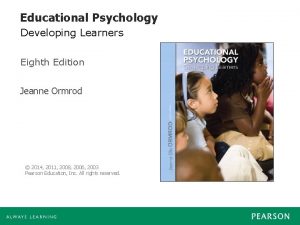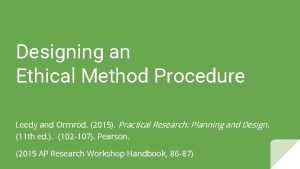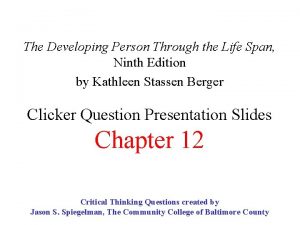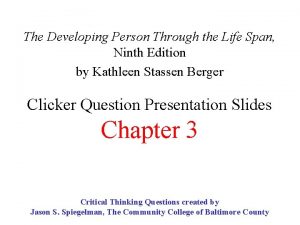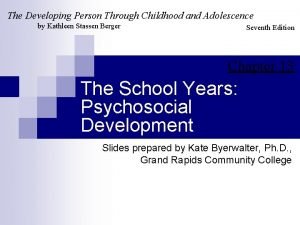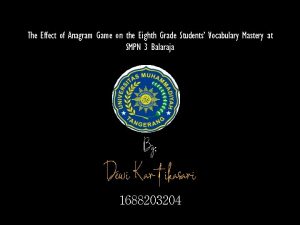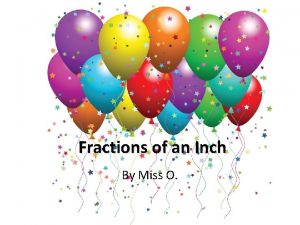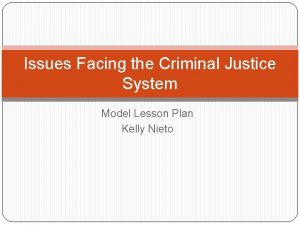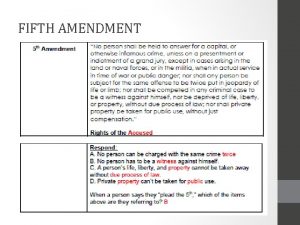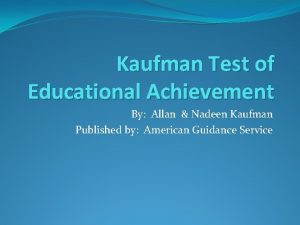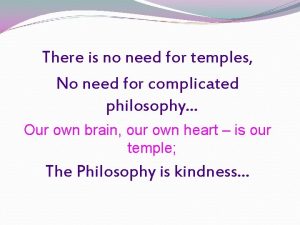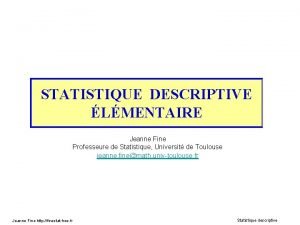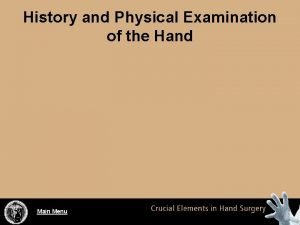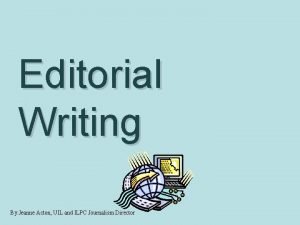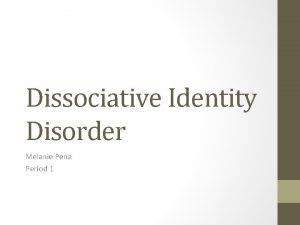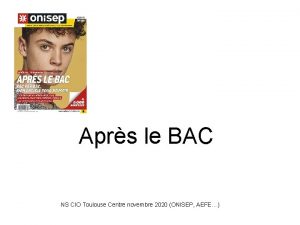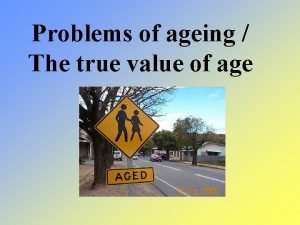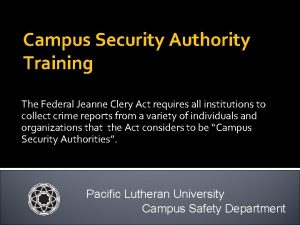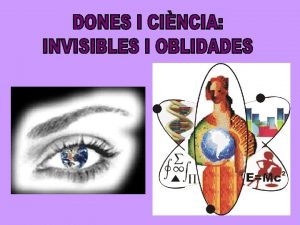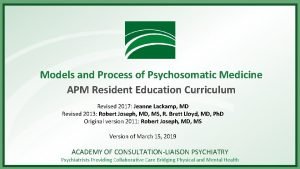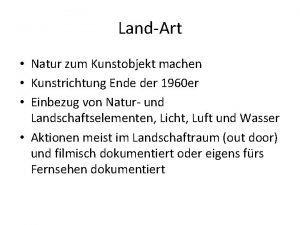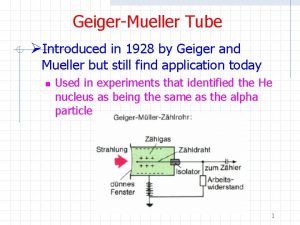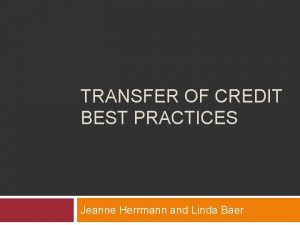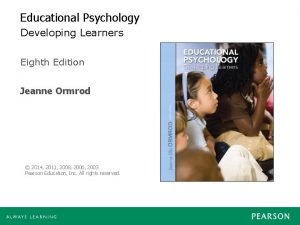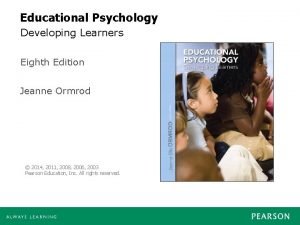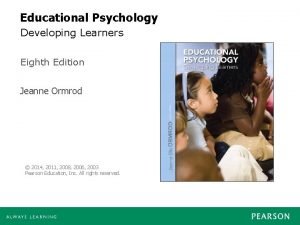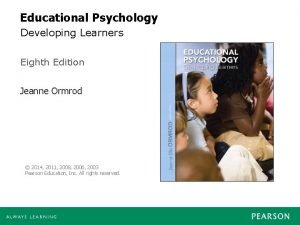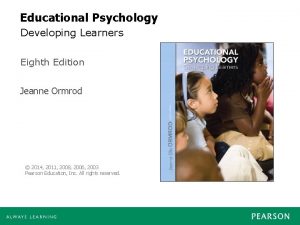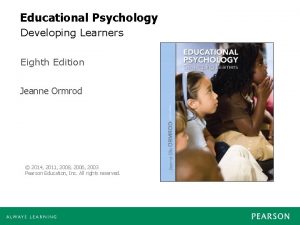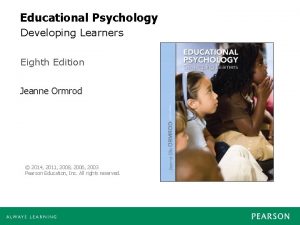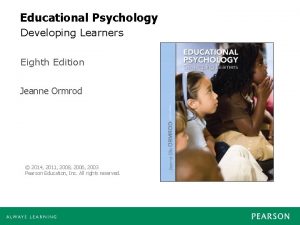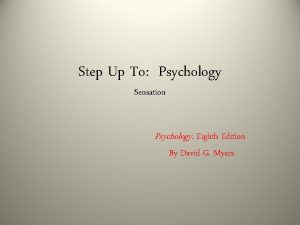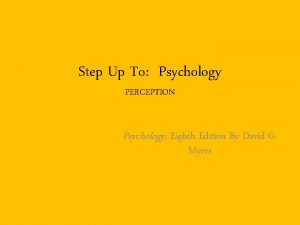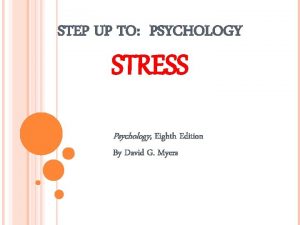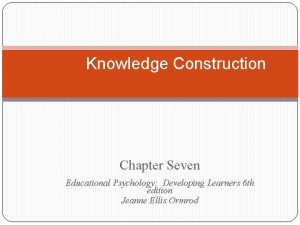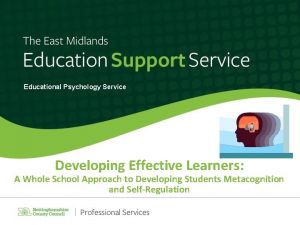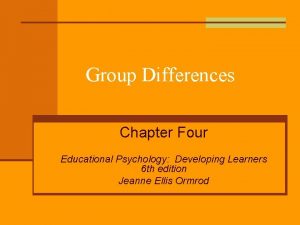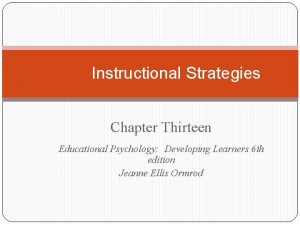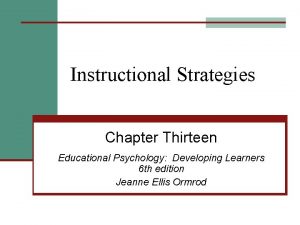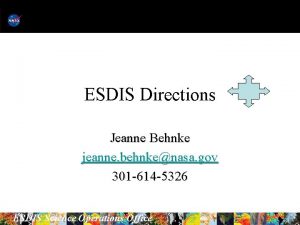Educational Psychology Developing Learners Eighth Edition Jeanne Ormrod




















































- Slides: 52

Educational Psychology Developing Learners Eighth Edition Jeanne Ormrod © 2014, 2011, 2008, 2006, 2003 Pearson Education, Inc. All rights reserved.

Chapter 14 Classroom Assessment Strategies Ormrod Educational Psychology: Developing Learners , 8 e © 2014 Pearson Education, Inc. All rights reserved. 14 -1

The Many Forms of Assessment Ormrod Educational Psychology: Developing Learners , 8 e © 2014 Pearson Education, Inc. All rights reserved. 14 -2

Assessment n Process of observing a sample of a student’s behavior and drawing inferences about the student’s knowledge and abilities. Ormrod Educational Psychology: Developing Learners , 8 e © 2014 Pearson Education, Inc. All rights reserved. 14 -3

Formative vs. Summative n Formative n assess students’ knowledge before or during instruction n homework assignments, in-class assignments, quizzes “curriculum-based assessment” Summative n assess students’ achievement after instruction n final exams Ormrod Educational Psychology: Developing Learners , 8 e © 2014 Pearson Education, Inc. All rights reserved. 14 -4

Informal vs. Formal n n Informal = spontaneous, unplanned observation Formal = planned in advance, used for a specific purpose n n n scheduled at particular time students can prepare for it intended to yield information about particular instructional goals or content area standards Ormrod Educational Psychology: Developing Learners , 8 e © 2014 Pearson Education, Inc. All rights reserved. 14 -5

Paper–Pencil vs. Performance n Paper–pencil n n students address questions or problems on paper Performance n students demonstrate abilities or skills Ormrod Educational Psychology: Developing Learners , 8 e © 2014 Pearson Education, Inc. All rights reserved. 14 -6

Traditional vs. Authentic n Traditional n n measuring knowledge and skills in relative isolation from tasks typically found in the outside world Authentic n measuring students’ knowledge and skills in a real-life context Ormrod Educational Psychology: Developing Learners , 8 e © 2014 Pearson Education, Inc. All rights reserved. 14 -7

Standardized vs. Teacher-Developed n Standardized n n n developed by test construction experts published for use in many different schools and classrooms Teacher-developed n typically used to assess achievement related to specific instructional objectives Ormrod Educational Psychology: Developing Learners , 8 e © 2014 Pearson Education, Inc. All rights reserved. 14 -8

Criterion-Referenced vs. Norm-Referenced n Criterion-referenced n n what students have and have not accomplished relative to predetermined standards Norm-referenced n how each student’s performance compares with the performance of peers Ormrod Educational Psychology: Developing Learners , 8 e © 2014 Pearson Education, Inc. All rights reserved. 14 -9

Using Assessment for Different Purposes Ormrod Educational Psychology: Developing Learners , 8 e © 2014 Pearson Education, Inc. All rights reserved. 14 -10

Assessment is used for… n n Guiding instructional decision making Determining what students have learned from instruction Evaluating the quality of instruction Diagnosing learning and performance problems n n Response to intervention (RTI) Promoting learning Ormrod Educational Psychology: Developing Learners , 8 e © 2014 Pearson Education, Inc. All rights reserved. 14 -11

Promoting Learning n n Assessments can motivate students to study and learn. Assessments can influence students’ cognitive processes as they study. Assessments can serve as learning experiences in and of themselves. Assessments can provide valuable feedback about learning progress. Ormrod Educational Psychology: Developing Learners , 8 e © 2014 Pearson Education, Inc. All rights reserved. 14 -12

Assessment Strategies n n Use rubrics for complex topics/skills. Describe instructional goals/objectives in clear, understandable language. Assess students’ progress frequently rather than infrequently. When giving an assessment, communicate a desire to enhance understanding and promote mastery. Ormrod Educational Psychology: Developing Learners , 8 e © 2014 Pearson Education, Inc. All rights reserved. 14 -13

Assessment Strategies n n n Help students detect important differences between genuine mastery and more superficial knowledge. Engage students in constructive discussions of one another’s work, with a focus on ideas for improvement. Give students opportunities to revise their work based on feedback they’ve received. Ormrod Educational Psychology: Developing Learners , 8 e © 2014 Pearson Education, Inc. All rights reserved. 14 -14

Dynamic Assessment n Assesses students’ ability to learn something new, in a one-on-one situation that includes instruction, assistance, some other form of scaffolding. Gives insight into: n n Students’ readiness for instruction Students’ motivational and affective patterns Students’ work habits Potential obstacles to students’ learning Ormrod Educational Psychology: Developing Learners , 8 e © 2014 Pearson Education, Inc. All rights reserved. 14 -15

Include Students n n Solicit students’ ideas about assessment criteria and rubric design. Provide examples of good and not-sogood products. Have students compare self-ratings of their performance with teacher ratings. Ask students to write practice questions similar to those they might see on an upcoming paper–pencil test. Ormrod Educational Psychology: Developing Learners , 8 e © 2014 Pearson Education, Inc. All rights reserved. 14 -16

Include Students n n Have students keep ongoing records of their performance. Have students reflect on their work in daily or weekly journal entries. Have students compile a portfolio of their work. Ask students to lead parent–teacher conferences. Ormrod Educational Psychology: Developing Learners , 8 e © 2014 Pearson Education, Inc. All rights reserved. 14 -17

Important Qualities of Good Assessment Ormrod Educational Psychology: Developing Learners , 8 e © 2014 Pearson Education, Inc. All rights reserved. 14 -18

RSVP n Reliability n n The results of an assessment should be consistent no matter when we give it. Standardization n The assessment should have a similar format, content, and procedure for all students. Ormrod Educational Psychology: Developing Learners , 8 e © 2014 Pearson Education, Inc. All rights reserved. 14 -19

RSVP n Validity n n The assessment should measure what it is intended to measure. Practicality n The assessment and its procedures should be fairly simple to use and take only a small amount of time to administer and score. Ormrod Educational Psychology: Developing Learners , 8 e © 2014 Pearson Education, Inc. All rights reserved. 14 -20

Reliability n n Extent to which a measure yields consistent information about the knowledge, skills, or characteristics being assessed Not perfect n n n students change from day to day physical environment may change administration may vary measure may not be well constructed scoring is subjective Ormrod Educational Psychology: Developing Learners , 8 e © 2014 Pearson Education, Inc. All rights reserved. 14 -21

Standardization n Extent to which an assessment involves similar content and format and is administered and scored in the same way for everyone Ormrod Educational Psychology: Developing Learners , 8 e © 2014 Pearson Education, Inc. All rights reserved. 14 -22

Validity n Extent to which an assessment instrument n n measures what it’s intended to measure allows us to draw appropriate inferences about the ability in question Ormrod Educational Psychology: Developing Learners , 8 e © 2014 Pearson Education, Inc. All rights reserved. 14 -23

Validity n Content validity n n Predictive validity n n are we testing what we taught? do the results predict future performance? Construct validity n Are we measuring general, abstract characteristics accurately? Ormrod Educational Psychology: Developing Learners , 8 e © 2014 Pearson Education, Inc. All rights reserved. 14 -24

Practicality n Extent to which assessment instruments and procedures are relatively easy to use n n n expense expertise time Ormrod Educational Psychology: Developing Learners , 8 e © 2014 Pearson Education, Inc. All rights reserved. 14 -25

Informal Assessment Ormrod Educational Psychology: Developing Learners , 8 e © 2014 Pearson Education, Inc. All rights reserved. 14 -26

Informal Assessment n n n n Occurs in day-to-day interactions Provides continuous feedback about effectiveness of instruction Helps determine appropriateness and success of formal assessments Provides clues about factors affecting performance Is very practical May not be very reliable or valid Is not standardized Ormrod Educational Psychology: Developing Learners , 8 e © 2014 Pearson Education, Inc. All rights reserved. 14 -27

Paper-Pencil Assessment Ormrod Educational Psychology: Developing Learners , 8 e © 2014 Pearson Education, Inc. All rights reserved. 14 -28

Paper-Pencil Assessment n n Easy, fast, practical Recognition tasks n n multiple choice, true-false, matching Recall tasks n short-answer, essay, word problems Ormrod Educational Psychology: Developing Learners , 8 e © 2014 Pearson Education, Inc. All rights reserved. 14 -29

Constructing Assessments n Alternative-response items n n rephrase ideas presented in class or the textbook write statements that clearly reflect one alternative or the other avoid excessive use of negatives Matching items n n keep items in each column homogeneous have more items in one column than the other Ormrod Educational Psychology: Developing Learners , 8 e © 2014 Pearson Education, Inc. All rights reserved. 14 -30

Constructing Assessments n Multiple-choice items n n present distractors that are clearly wrong to students who know the material but plausible to students who don’t avoid negatives in both stem and alternative use “all of the above” or “none of the above” seldom if at all avoid giving logical clues about the correct answer Ormrod Educational Psychology: Developing Learners , 8 e © 2014 Pearson Education, Inc. All rights reserved. 14 -31

Constructing Assessments n Short-answer and completion items n n n specify the type of response required For completion items, include only one or two blanks per item Problems and interpretive exercises n n use new examples and situations include irrelevant information Ormrod Educational Psychology: Developing Learners , 8 e © 2014 Pearson Education, Inc. All rights reserved. 14 -32

Constructing Assessments n Essay tasks n n n combine lengthy essay items with other items that require less time provide a structure for responding ask questions that can be scored clearly Ormrod Educational Psychology: Developing Learners , 8 e © 2014 Pearson Education, Inc. All rights reserved. 14 -33

General Guidelines n n Define tasks clearly, unambiguously Consider giving students access to reference materials Place easier and shorter items before more challenging ones Identify scoring criteria in advance Ormrod Educational Psychology: Developing Learners , 8 e © 2014 Pearson Education, Inc. All rights reserved. 14 -34

Administering the Assessment n n n Provide a quiet and comfortable environment Encourage students to ask questions when tasks are not clear Take steps to discourage cheating Ormrod Educational Psychology: Developing Learners , 8 e © 2014 Pearson Education, Inc. All rights reserved. 14 -35

Scoring Students’ Responses n n n Strive for objectivity Score grammar and spelling separately from content Skim a sample of responses before scoring Score item by item rather than paper by paper Try not to let expectations influence judgments Provide detailed feedback Ormrod Educational Psychology: Developing Learners , 8 e © 2014 Pearson Education, Inc. All rights reserved. 14 -36

Performance Assessment Ormrod Educational Psychology: Developing Learners , 8 e © 2014 Pearson Education, Inc. All rights reserved. 14 -37

Performance Assessment n When selecting a measure n n n decide whether to look at products, processes, or both determine if you need an individual or group performance determine if you are measuring restricted or extended performance Ormrod Educational Psychology: Developing Learners , 8 e © 2014 Pearson Education, Inc. All rights reserved. 14 -38

Planning and Administering Performance Assessments n n n Consider incorporating assessment into other instructional activities Provide appropriate structure Plan classroom management strategies for the assessment activity Ormrod Educational Psychology: Developing Learners , 8 e © 2014 Pearson Education, Inc. All rights reserved. 14 -39

Scoring Student Performance n n n Describe criteria in concrete terms Develop a checklist or rating scale Select analytic or holistic scoring n n analytic: evaluating components separately holistic: summarizing performance with a single score Limit criteria to the most important aspects of the desired response Note significant aspects of performance that the rubric doesn't address Ormrod Educational Psychology: Developing Learners , 8 e © 2014 Pearson Education, Inc. All rights reserved. 14 -40

Additional Considerations in Formal Assessment Ormrod Educational Psychology: Developing Learners , 8 e © 2014 Pearson Education, Inc. All rights reserved. 14 -41

Teach Testwiseness n Teach students to n n n clarify task(s) to be performed use time efficiently reason deductively avoid sloppy errors guess well Ormrod Educational Psychology: Developing Learners , 8 e © 2014 Pearson Education, Inc. All rights reserved. 14 -42

Keep Anxiety in Check n Test anxiety can be debilitating Ormrod Educational Psychology: Developing Learners , 8 e © 2014 Pearson Education, Inc. All rights reserved. 14 -43

Encourage Risk Taking n n n Assess students’ achievement frequently Provide opportunities to correct errors When appropriate, allow students to retake assessments Ormrod Educational Psychology: Developing Learners , 8 e © 2014 Pearson Education, Inc. All rights reserved. 14 -44

Evaluating Assessment Tools n Item analysis n n item difficulty item discrimination Ormrod Educational Psychology: Developing Learners , 8 e © 2014 Pearson Education, Inc. All rights reserved. 14 -45

Using Digital Technologies in Classroom Assessments Ormrod Educational Psychology: Developing Learners , 8 e © 2014 Pearson Education, Inc. All rights reserved. 14 -46

Digital Technology n n Online resources formative assessment Templates and management systems for teacher-developed assessments Electronic essay graders Strategies for facilitating selfassessment and peer feedback Ormrod Educational Psychology: Developing Learners , 8 e © 2014 Pearson Education, Inc. All rights reserved. 14 -47

Taking Student Diversity into Account Ormrod Educational Psychology: Developing Learners , 8 e © 2014 Pearson Education, Inc. All rights reserved. 14 -48

Student Diversity n Keep in mind: n n n Students often suffer from test anxiety. Gender and ethnic differences may affect assessment performance independent of their actual learning and achievement. Assessment instruments must comply with the federal mandates regarding students with special needs. Ormrod Educational Psychology: Developing Learners , 8 e © 2014 Pearson Education, Inc. All rights reserved. 14 -49

The Big Picture Ormrod Educational Psychology: Developing Learners , 8 e © 2014 Pearson Education, Inc. All rights reserved. 14 -50

The Big Picture n n Assessments must be closely aligned with important instructional goals and objectives. Classroom assessment practices have a significant influence on what and how students learn. Classroom assessments practices also affect students’ motivation and emotions. Classroom assessments are useful yet imperfect tools. Ormrod Educational Psychology: Developing Learners , 8 e © 2014 Pearson Education, Inc. All rights reserved. 14 -51
 Ormrod educational psychology
Ormrod educational psychology Psychology eighth edition david g myers
Psychology eighth edition david g myers David g myers psychology 8th edition
David g myers psychology 8th edition Operations management eighth edition
Operations management eighth edition Leedy and ormrod 2015
Leedy and ormrod 2015 The developing person through the life span 9th edition
The developing person through the life span 9th edition The developing person through the lifespan
The developing person through the lifespan The developing person through the life span 9th edition
The developing person through the life span 9th edition The developing person through childhood 7th edition
The developing person through childhood 7th edition The developing person through childhood 7th edition
The developing person through childhood 7th edition Anagram of eighth
Anagram of eighth Inner planets matching
Inner planets matching Nearest eighth of an inch
Nearest eighth of an inch The fifth, sixth, seventh, and eighth amendments protect *
The fifth, sixth, seventh, and eighth amendments protect * 8th commandment catholic
8th commandment catholic Taj mahal 8th wonder of the world
Taj mahal 8th wonder of the world Partial veneer crown
Partial veneer crown Eighth amendment excessive bail
Eighth amendment excessive bail Eighth letter of the alphabet
Eighth letter of the alphabet Eighth amendment excessive bail
Eighth amendment excessive bail Eighth amendment excessive bail
Eighth amendment excessive bail Kaufman test of educational achievement scores
Kaufman test of educational achievement scores Mis chapter 6
Mis chapter 6 Chapter 1
Chapter 1 Jeanne acton
Jeanne acton Swyer syndrome
Swyer syndrome Jeanne fine
Jeanne fine Jeanne sharbuno
Jeanne sharbuno Jeanne acton
Jeanne acton Jeanne duprau awards
Jeanne duprau awards Jeanne mason
Jeanne mason Sublimus test
Sublimus test What did jeanne remember, and what did it signify?
What did jeanne remember, and what did it signify? Ceremonial argument editorial
Ceremonial argument editorial Jeanne fery
Jeanne fery Jeanne marie kegelin
Jeanne marie kegelin Poésie ponctuation une virgule enfermée dans une bulle
Poésie ponctuation une virgule enfermée dans une bulle Dr jeanne marrazzo biography
Dr jeanne marrazzo biography Ecole sainte jeanne d'arc gagny
Ecole sainte jeanne d'arc gagny Cio toulouse
Cio toulouse Jeanne clamet
Jeanne clamet Jeanne adiwinata pawitan
Jeanne adiwinata pawitan Plu campus safety
Plu campus safety Jeanne villepreux
Jeanne villepreux Jeanne lackamp
Jeanne lackamp Christo und jeanne claude steckbrief
Christo und jeanne claude steckbrief Jeanne goosen gedigte
Jeanne goosen gedigte Jeanne du prau
Jeanne du prau Jeanne ayers
Jeanne ayers Jeanne braz
Jeanne braz Jeanne potvin
Jeanne potvin Jeanne geiger crisis center
Jeanne geiger crisis center Jeanne herrmann
Jeanne herrmann
